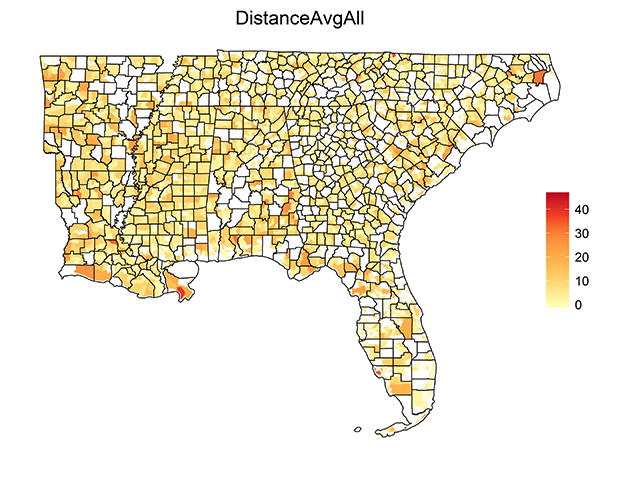
Data descriptor citation:
Heir Stamm, J., Serban, N., Swann, J. "Accessibility and Availability of Vaccine in the 2009 H1N1 Vaccination Campaign", published by the Health Analytics Group@GT.
This data descriptor presents small-area estimates of spatial access to H1N1 vaccine derived using optimization modeling with individual choice constraints, for the states of Alabama, Arkansas, Florida, Georgia, Louisiana, Mississippi, North Carolina, South Carolina, and Tennessee. Estimates are included for both the overall population and for the sub-population of children and young adults (ages six months to 24 years). The latter constituted an important priority group in the H1N1 vaccination campaign. Spatial access measures considered are Proximity and Scarcity.
Proximity pertains to the distance barriers that patients experience in reaching their providers, measured as travel distance. Scarcity pertains to the number of people seeking vaccine at a facility relative to the number of vaccine doses available there.
These estimates can be used to identify locations for targeted improvements in spatial access to H1N1 vaccine and to quantify local disparities in access.
The data file attached with this descriptor includes the following columns:
ST_FIPS – Two-digit FIPS (Federal Information Processing Standard) state code
CO_FIPS – Three-digit FIPS (Federal Information Processing Standard) county code
TRACT – Six-digit census tract code
Y – latitude
X – longitude
ServiceAvgAll – Average scarcity (persons per vaccine) experienced by all individuals in the corresponding census tract
DistanceAvgAll – Average distance (miles) traveled by all individuals in the corresponding census tract to receive vaccine
ServiceAvgPriority – Average scarcity (persons per vaccine) experienced by the sub-population of children and young adults ages six months to 24 years in the corresponding census tract when vaccine is available only to the sub-population
DistanceAvgPriority – Average distance (miles) traveled by the sub-population of children and young adults ages six months to 24 years in the corresponding census tract when vaccine is available only to the sub-population
- Estimates
- Access
